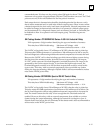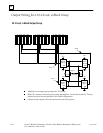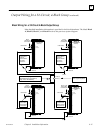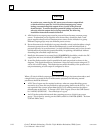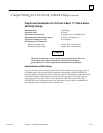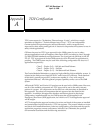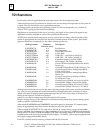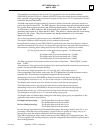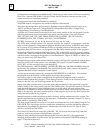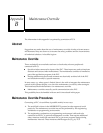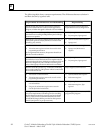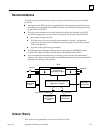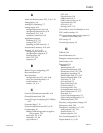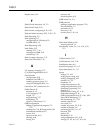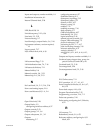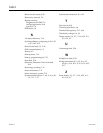
A
GFT-166 Revision 1.3
April 4, 1995
A-4 Genius Modular Redundancy Flexible Triple Modular Redundant (TMR) System
User’s Manual – March 1995
GFK-0787B
Configuration worksheets are available for all I/O block types in the Genius I/O Discrete and Analog
Blocks User’s Manual (GEK-90486-2). Each I/O block used in the safety-relevant portion of the
system must have a worksheet prepared.
Configuration Protect must be Enabled in each block.
The HHM must be configured to use serial bus address 0 (the default).
The following configuration options must be disabled and the HHM keyswitch must be set to
“MON” and the key removed: Change Block ID, Change Block Baud Rate, Change Block
Configuration, Circuit Forcing, Clear Block Faults
All Series 90–70 instructions can be used in the non–safety portion of the user program, but the
following instructions must not be used in the safety relevant portion of the user program:
VME_CFG_RD, VME_CFG_WRT, PIDISA, PIDIND, DO_IO, SUSIO, ALL SFC functions,
COMMREQ, DATA_INIT_COMM, CALL SUB, CALL EXTERNAL.
SVCREQ functions #1, #3, #4, #6, #8, #14 and #19 may not be used.
The NON–safety relevant portion of a program must be “de–coupled” or segregated from the
safety relevant portion by using separate program blocks or subroutines. In addition there must
be no overlap of I/O reference addresses in the two separate portions of the program. Control
algorithms must NOT be in any way integrated with the safety relevant portion of the program.
No forces or overrides can be present in the system. This is checked by verifying system variables
%S0012 (FRC_PRE) and %S0011 (OVR_PRE) are equal to 0. The application program must include
code that issues a warning to the operator, via a redundant PLC output, if %S0012 or %S0011 are
in the on state in any of the three PLCs.
The application program must include code that issues a warning to the operator to indicate that a
fault (any fault) exists in the system, via a redundant PLC output, if system variable %SC0009
(ANY_FLT) is in the on state in any of the three PLCs.
The GMR control bits, %M12258 (IORES), %M12259 (PLCRES) and %M12264 (PLCRESG), must not
be driven by the application automatically. They must be driven only under control of an operator
(Operator interface or hard wired push– button inputs).
A status report must be produced by setting the GMR REPORT bit (%M12262). The resultant
information must be checked verified against the configuration printout.
Two backup copies of the system configuration and application program must be made for
documentation and backup purposes. These backups must be verified to be identical to what
resides in the PLCs by use of the Logicmaster 90–70 software.
Inputs from other systems to any part of the safety relevant portion of the application program
must be made via the safety relevant inputs of the GMR system. If a software interface, it must be
made through that group of input addresses reserved for the safety relevant portion of the
application. In addition, it must be verified that any non safety inputs cannot override a demand
made to an output by the safety relevant portion of the program or prevent any field input to the
safety relevant portion of the program.
Manual trips and overrides must be executed exclusively during maintenance of the system. The
specific requirements are described in the document “Maintenance Override, Version 2.2, Sept. 8,
1994, which is reprinted in GFK–0787B.
The Force Logon control bit must be set via a hard wired input device, as described in chapter 7 of
GFK–0787B. PLC force logon is to be considered a maintenance override and shall be subject to
requirements described in the document “Maintenance Override, Version 2.2, Sept. 8, 1994,
which is reprinted in GFK–0787B.
The Cancel I/O Shut Down control bit (%M12265 – SD_CAN) must left in the off (0) state and
must not used in any portion of the application program.
When the final commissioned application program is stored to the PLCs, all program data
including reference tables must be stored. The procedures in document GFK-0787B starting at
page 7-31 should be observed.



